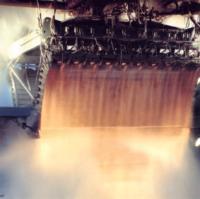 Linear aerospike test firing | |
| Country of origin | United States |
|---|---|
| Date | 1990's |
| Designer | Rocketdyne |
| Application | VentureStar |
| Predecessor | XRS-2200 |
| Status | Development Canceled |
| Liquid-fuel engine | |
| Propellant | LOX / LH2 |
| Configuration | |
| Nozzle ratio | 173:1 |
| Performance | |
| Thrust, vacuum | 2,201 kN (495,000 lbf) |
| Thrust, sea-level | 1,917 kN (431,000 lbf) |
| Thrust-to-weight ratio | 83:1 |
| Chamber pressure | 155 bar (2,250 psi) |
| Specific impulse, vacuum | 455 seconds |
| Specific impulse, sea-level | 347 seconds |
| Dimensions | |
| Measurement | Forward End: 6.4 m (250 in) wide, 2.4 m (94 in) long Aft End: 2.4 m (94 in) wide, 2.4 m (94 in) long Forward to Aft: 4.3 m (170 in) |
The Rocketdyne RS-2200 was an experimental linear aerospike rocket engine developed by Rocketdyne for Lockheed Martin's VentureStar program. [1] [2] The program was ultimately cancelled in 2001 before any RS-2200 engines were assembled. [3] [4] [5]